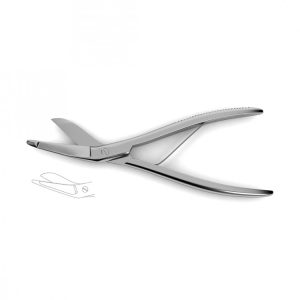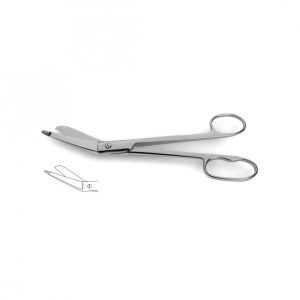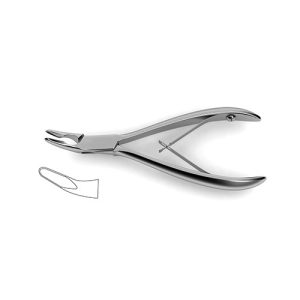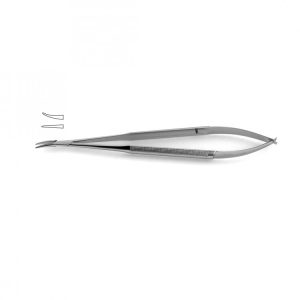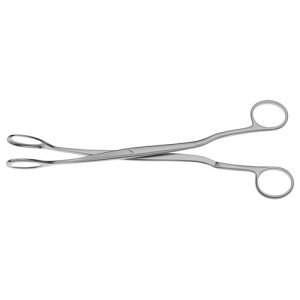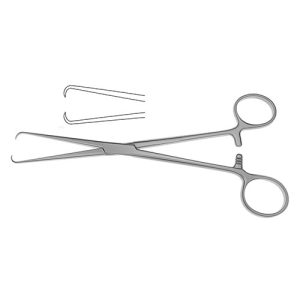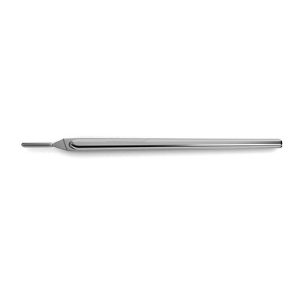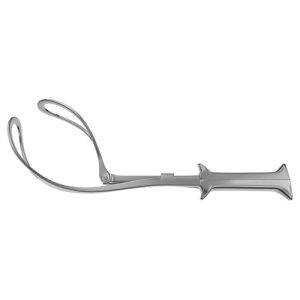SURGICAL INSTRUMENTS
Bandage Scissors
Bandage Scissors
1 serrated blade, 9" (23.0 cm)
Bandage Scissors are handcrafted from surgical grade German stainless steel. Designed with a serrated edge to ensure effortless cutting through thick bandages with reduced slipping. With a sharp tip and a blunted tip, this instrument is designed to reduce iatrogenic injury to the patient.
Bandage Scissors
serrated, angled shank, 5-1/2" (14.0 cm)
Hi-Level (Knowles) Bandage Scissors are handcrafted from surgical grade German stainless steel. Available with a serrated and angled shank, this instrument is used to cut bandages easily and effectively. With a sharp tip and a blunted tip, this instrument is designed to reduce iatrogenic injury to the patient.
Bandage Scissors – 1 Large Finger Ring
Bandage Scissors - 1 Large Finger Ring
w/ 1 large finger ring, 8" (20.3 cm)
Lister Bandage Scissors with one large finger ring are handcrafted from surgical grade German stainless steel. Available in the 8" size, this instrument is used to cut bandages easily and effectively. With a sharp tip and a blunted tip, this instrument is designed to reduce iatrogenic injury to the patient. Please note that website images are often representative of the product family and may not conform to the exact specifications or features of the item you select. The final specifications will match the description of the specific catalog item you select.
Bane Bone Rongeur
Bane Bone Rongeur is a specialized instrument made for manipulation of bone. It can be used to do tings like clip bone into smaller fragments or to chip or gnaw away at a particular areas of bone in repair of fractures or simply in increasing access to the surgical field. This instrument features jaws that are 5.0 mm wide and are curved which makes it better suited to mirror the contours of certain areas of the body.
Barraquer Micro Needle Holder
Standard pattern, round handles, 5" (12.7 cm)
Barraquer Micro Needle Holder is handcrafted from surgical grade German stainless steel and designed with a reliable, smooth grip jaw. Designed with either a straight or curved jaw with optional lock, this instrument is often used for ophthalmic procedures. The round handles offer non-slip, comfortable control.
Barrett Placenta Forceps
Barrett Tenaculum Forceps
Barron Knife Handle
octagonal, for blades 10-15c, 5-1/2" (14.0 cm)
Barron Knife Handle #3 is an octagonal shape that holds blades 10-15c. This pencil-shaped device is also tapered and provides the surgeon with increased control while making a precise incision. The octagonal design also is made for the tips of the fingers to direct the depth and course of the incision.
Barsky Skin Hook
Knurled handle, 6" (15.2 cm), sharp
Barsky Skin Hook can be used in various medical procedures where skin or soft tissue needs to be maneuvered, such as procedures involving plastic surgery or ophthalmology. The knurled handle contributes to a better grip for the surgeon, and the hook at the end contains a sharp prong that can be single or double. The high quality stainless steel used to produce this instrument may help to prevent bacteria from adhering to its surface during an operation.
Barton Obstetrical Forceps
14" (35.5 cm) Barton Obstetrical Forceps are commonly used to aid in the delivery process when the fetal head is in the high transverse position, commonly seen during a cesarean delivery. The forceps feature a fixed posterior cephalic blade and a hinged anterior blade to firmly grasp the fetal head once locked. The blades are fenestrated to allow palpation by the surgeon and to provide minimal discomfort to the child's head.




